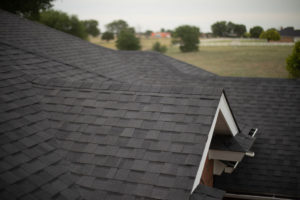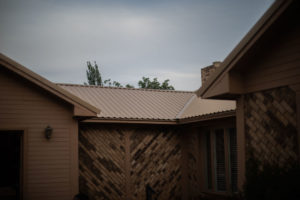The Math And Vocabulary Of Your Claim
Many homeowners who have been through the challenge of needing to handle the roof damage and trying to understand their roofing claim. And sometimes the difficulty associated with getting it paid. So, how do make sense of your insurance coverage? The answer is you just need to understand the terminology used in your claim, and what the numbers mean. Then it’s just a little preparation, paperwork and working with an expert roofer to work on your behalf.
Do not let your insurance provider inform you what’s covered and what isn’t. Many of us don’t check out the fine print of the policy until something fails. Now is the time to do that. If you do not have a copy of the policy, a typical issue, you can request one from your representative.
Understanding The Terminology Of Your Claim
There are a lot of acronyms associated with your roof insurance claim.
Deductible – a specified amount of money that the insured must pay before an insurance company will pay a claim. If your deductible is $500 and the value of your claim damage is $7000, then the amount the insurance company will pay in this instance is $6500.
Base Service Charges – charges associated with compensating your contractor for setup and travel expenses.
Replacement Cost Value or RCV – RCV is the maximum amount your insurance company will pay you for damage to covered property before accounting for reimbursable depreciation. This is based on a homeowner using qualified, licensed and insured contractors, and the current cost to replace your property with new, identical or comparable property.
Depreciation – Depreciation is the loss in value of your roof due to wear, age, or deterioration. As an example, if your roof is warrantied for 40 yrs and been in place for 10 yrs the depreciation would be 25%.
ACV (Actual Cash Value) – Although there is some ambiguity (from a legal standpoint) about the definition of ACV, the generally accepted definition is the cost to replace with new property of like kind and quality, minus any realized depreciation.
ACV Settlement – The ACV settlement is the replacement cost value minus the depreciation and minus the deductible.
Recoverable Depreciation – the portion of the depreciated amount that you can get back or “recover” from your insurance company when you make a claim on a policy with replacement cost coverage. Such claims will generally be paid by the insurer in two parts.
Now that you have a basic understanding of the vocabulary associated with a roof insurance claim, let’s apply this to two specific monetary examples. The first one with an Actual Cash Value (ACV) replacement policy and the second with a Replacement Cost Value (RCV) policy.
Claim example: $10000
Base Service Expense/Charge: $250
Subtotal: $10250
Minus Depreciation: $3000
Subtotal: $7250
Minus Deductible: $1000
Subtotal: $6250
Payout for ACV: $6250
And now we’ll look at what the math looks like if you’re on a RCV policy.
Claim example: $10000
Base Service Expense/Charge: $250
Subtotal: $10250
Minus Deductible: $1000
Subtotal: $9250 This is the most the insurer will pay for the claim
Actual Cash Value of Loss: $8000
The first check would be for: $7000 (ACV minus the deductible)
Once the repairs have been completed, with proper receipts and documentation, your expenses above the ACV (in this case $8000), will be distributed in a second check, up to, but not exceeding $10250.
Handling Your Roofing Claim
 Remember, it’s best to have your roofing examined regularly. Preserve it and make repair work as needed. If you can reveal that you kept your roofing system in excellent condition, and unexpectedly it’s a mess after a storm, you’ll have a strong case. Ask the inspector to document the condition of your roofing system with photos and a composed, signed evaluation of the roofing system’s condition.
Remember, it’s best to have your roofing examined regularly. Preserve it and make repair work as needed. If you can reveal that you kept your roofing system in excellent condition, and unexpectedly it’s a mess after a storm, you’ll have a strong case. Ask the inspector to document the condition of your roofing system with photos and a composed, signed evaluation of the roofing system’s condition.
Next, your best ally in a battle over roofing system repair (if it comes to that) will be a licensed roofing contractor, not an attorney. Make sure they have outstanding credibility, reviews and are licensed and bonded. They should have experience handling insurance claims.
A good roofing contractor will assist with the next couple of steps before repairing the roof. Prevent Additional Damage! Most house owner’s policies require you to cover the damaged roofing immediately.
Here’s a common and unfortunate scenario: Storm 1 blows a lot of shingles off a roof. Storm 2, a week later, brings wind-driven rain that enters the vulnerable house and ruins everything it touches– ceilings, walls, floor covering, electronic devices and more. This is why numerous houses should be gutted or destroyed after typhoons.
This makes it difficult for roofers to make fast repairs. Rather, your roof company will get the harmed areas tarped and secured to secure your home and your wallet. Once this is done, the roofing should be okay up until repair work can be made. The majority of states require a property owner to make a claim within 30-60 days. It’s important to remember that when there is a high volume of claims, the earlier you file the documents, the faster you will get your claim processed.
If you have a leak associated with a storm, the insurance company will usually require evidence that storm damage is the cause of the leak. To identify this, insurance provider will send its own adjuster– someone that works for the insurance coverage business. If the storm damage is extensive, “independent inspectors” are brought in to handle the load of claims.
Reasons a Claim Might Be Rejected
Common reasons for rejecting a roofing insurance coverage claim are: The roofing wasn’t set up effectively, so it is the roofer’s fault. This is the most typical reason.
Next, is that the roof wasn’t maintained (loose flashing or a split vent boot were found, for example, that enabled water through). So it’s the property owner’s fault. Or the attic isn’t properly vented, so the shingles were cupped and prone to wind. It’s the contractor’s fault. The damage is only cosmetic. The roof will still secure the house.
 In all of these situations, the outcome is the exact same: Claim denied! This is where an inspection from a roofer that you are paying is necessary. What a roofing professional ought to record for you: That roof materials on the intact part of the roofing are correctly set up and not malfunctioning– so the issue isn’t with installation or products. That the rest of the home (where it might affect the roof) was built properly, and that it appears the homeowner took reasonable care to make repairs and maintain the roof prior to the storm.
In all of these situations, the outcome is the exact same: Claim denied! This is where an inspection from a roofer that you are paying is necessary. What a roofing professional ought to record for you: That roof materials on the intact part of the roofing are correctly set up and not malfunctioning– so the issue isn’t with installation or products. That the rest of the home (where it might affect the roof) was built properly, and that it appears the homeowner took reasonable care to make repairs and maintain the roof prior to the storm.
It’s best to request a written assessment from the roofing contractor that attends to the issues listed above– The degree and reason for the damage and the condition of the remainder of the roof. The inspection and report will cost up to $500, but it is cash well invested and can help ensure your property owner’s insurance claim paid. If your roof contractor’s report is reputable, you will remain in good condition.
Make sure that the roofer is using high-quality products. Be long term cost-conscious instead of first cost-conscious. If needed the roofing company can call your insurance company and press for more money to do the job right. This occurs regularly, and it is often successful. No insurer wants professionals getting the word out that it won’t look after its clients.
Install Roofing System Shingles $7,500 Typical rate Install Metal Roofing $14,500 Typical cost Install Flat Roof $8,225

Let's Connect
575-607-8070 Phone
575-315-0868 Fax
